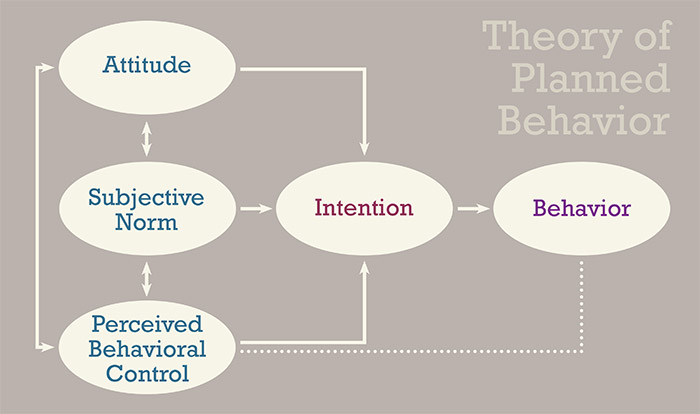Conversations about Behavior Modification in BDSM usually focus on B.F Skinner’s theory of Operant Conditioning, which centres on positive and negative reinforcement and punishment to influence and instill new behavior. Skinner’s approach is that there are really only two ways of changing someone’s behavior — the carrot and the stick.
But, there is a range of personal, social and environmental factors that influence behavior. On a personal level, beliefs, knowledge, attitude, skills and perhaps even genetics influence not only whether we want to change in the first place, but whether we actually have the ability to. Our interaction with friends, family and the community might also play a part. Even where we live could be a factor. It’s easier to be openly kinky in San Francisco than it is in Dubai.
We all exist within a complex web of societal and biological influences. Certainly Skinner’s carrot and stick can temporarily influence behavior. No-one wants to be punished, everyone wants to be rewarded. But, for behavioral modification to be lasting, we really need to look underneath the behavior to see what is influencing it and how we can adjust those influencers to get our desired results.
THEORY OF PLANNED BEHAVIOR
One model that helps to get under the skin of what is influencing behavior is Icek Ajzen’s Theory of Planned Behavior. It’s an extension of earlier work he did on the Theory of Reasoned Action to include perceived behavioral control.
The Theory of Planned Behavior is basically that our attitude towards a behavior (whether we positively or negatively value it), beliefs about the consequences of a behavior and what we see as the presence of factors that facilitate or hinder us performing that action influence each other. The way these combine influences our behavioral intention, which is how ready we are to perform (and perhaps continue to perform) that behavior. That, of course, influences whether the behavior actually happens or not.
Relating the Theory of Planned Behavior back to BDSM, a Master making it known to their sub that they desire a certain behavior (subjective norm) is only one part of the process.
You could certainly try to cajole that behavior with Positive Reinforcement (give good to increase the behavior) or Negative Reinforcement (take away bad to increase the behavior). Or, you could use Positive Punishment (give bad to decrease the behavior) or Negative Punishment (take away good to decrease the behavior) to force a change.
Those techniques, individually or in combination, will probably work to get you what you want, at least once. But, from there usually one of two things happen.
The behavior may stick, and the Master will say “look how good my sub/slave is at taking instruction”. They may even get the impression that all that’s needed for behavior modification is to ask for what they want, perhaps with a little reward (or spank) for emphasis.
 Often though, the behavior doesn’t stick, which leads to a cycle of (possibly escalating) reinforcement/punishment, and frustration for the Master who just doesn’t understand why something seemingly simple and clear can’t be carried out to their satisfaction. Or, it is carried out but in a grudging way and not with the joy and positive benefits to the relationship that he was hoping.
Often though, the behavior doesn’t stick, which leads to a cycle of (possibly escalating) reinforcement/punishment, and frustration for the Master who just doesn’t understand why something seemingly simple and clear can’t be carried out to their satisfaction. Or, it is carried out but in a grudging way and not with the joy and positive benefits to the relationship that he was hoping.
Subs are not autotrons, and whether it is conscious or subconscious, they will have their own beliefs about the consequences of a particular behavior. This is really the area that Operant Conditioning tries to influence… by manipulating the consequences/outcome. But, there are other factors that are consequences too. Does the sub enjoy it or find it distasteful? Does the action align or conflict with the sub’s self image or worldview? Is the action stupifyingly boring to them? These are examples of factors internal to the sub that will affect their motivation to consistently perform the action.
And, are there conditions external to the sub that might affect it too? Do they have the right training or knowledge? Does it disrupt an important schedule? Is there anything that is going to hinder their ability to consistently behave in the way the Master desires?
It’s important to note that all three of the considerations that affect behavioral intention in the Theory of Planned Behavior are beliefs. They are not set in stone and they can be influenced and changed.
Behavioral beliefs produce a favourable or unfavourable attitude toward the behavior, normative beliefs result in subjective norm and control beliefs are the perceived behavioral control. If a sub clearly understands what will make their Master happy (subjective norm) and they have a positive attitude to the behavior, and very importantly they perceive strong behavioral control (ability to carry out the behavior), then it is likely that behavioral modification will be successful.
FURTHER READING
• CLEVERISM – Theory of Planned Behavior: Definition, Explained, Examples

